“Don’t you know decaf tea causes cancer?”
He had my attention. I dropped the box of decaffeinated tea bags. I needed to know more.
“What do you mean?” I asked my colleague at the next desk.
“I thought decaffeinated tea and coffee was supposed to be good for you”
“But it depends on the decaffeinating process”.
Now I really was confused. It was time to consult Google.
What I found out was astonishing.
There are three main ways to decaffeinate tea and coffee.
- Methylene chloride or ethyl acetate (also known as organic chemical solvents)
- Carbon dioxide filtering
- The Swiss Water method
I discovered that drinking ordinary tea and coffee in moderation shouldn’t cause any problems.
But for heavy tea and coffee drinkers who like a change – and those who prefer decaf drinks for medical reasons such as Raynauds – there’s a choice of 3 decaffeinating processes.
But many tea brands seem reluctant to tell us their process, especially if they use the chemical solvents.
What’s The Problem With Decaf Tea?
It appears that the chemicals methylene chloride and ethyl acetate have been linked with cancer.
The Healthwyze website reports: “Consuming benzine, methylene chloride, and ethyl acetate regularly will vastly increase a person’s chances of contracting a serious disease, such as cancer; for the rest of his life.”
Considered to be much safer is the Carbon Dioxide (CO2) method of filtering the caffeine.
How does that work?
Put simply: pressurised Carbon Dioxide is used as a solvent to remove the caffeine.
A third way, the Swiss Water filtering method, is a more complex process – and therefore more expensive. It’s often found in health shops and is well labelled.
My Decaf Green Tea Problem
I love green tea. So one Christmas, my wife bought me some speciality decaffeinated green tea bags from our local health store.
But because there was no indication on the box about the decaffeination filtering method, I tried to find out.
The company responded to my enquiry, saying that they use the “MC decaffeination process”.
MC obviously stands for methylene chloride. So in other words, they use the chemical method.
That surprised me. I expected the tea bags to be CO2 filtered.
But having said that, there are arguments as to whether the chemical methods are harmful or not. Berkeley Wellness presents a research-backed case that all the methods are as safe as each other.
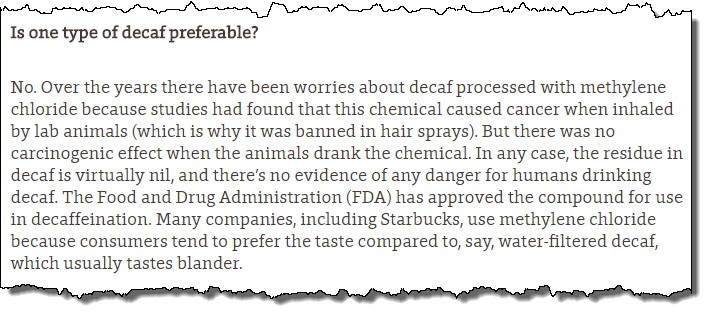
But the common belief is that the CO2 and Swiss Water methods are the safest.
And personally, I like to play safe.
How Can You Find Out How Your Favourite Dacaf Tea is Processed?
A good question! How can you find out which method a tea manufacturer uses?
You could do a Google search.
You could even ask them – just like I did on Facebook and Twitter.
Or you could read this great blog post I found on Sally’s Site. Sally wrote to the major tea producers and asked them which method they use. Their responses are published in her blog post.
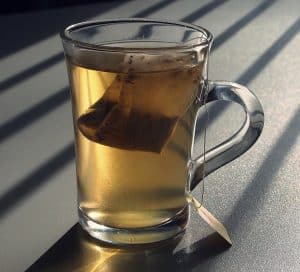 My personal view?
My personal view?
Normally I’ll drink ordinary green tea – and sometimes black tea.
So I’ll go for whatever is the bargain of the week…
Tetley, PG Tips, Twinnings…
From mid afternoon, I aim to drink decaf so that the caffeine doesn’t keep me awake at night.
My choice then is a limited number of tea producers which boldly say they use the Carbon Dioxide filtering method…
Such as Twinnings and Clipper.
Do you prefer decaffeinated tea and coffee?
Are you concerned about the type of filtering, or do you think it’s being fearful over nothing?
I’d love to hear your feedback. Do leave a comment below with your thoughts and questions.
Prefer to listen instead?
[player id=2296]



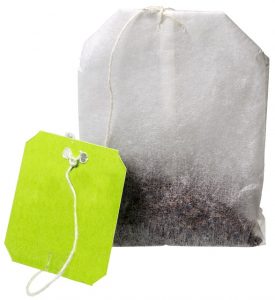

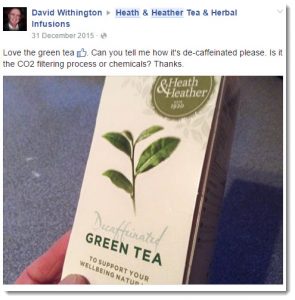
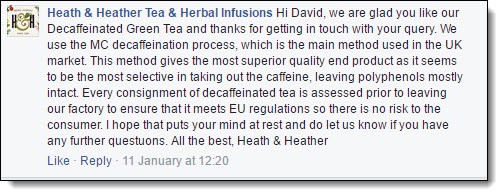

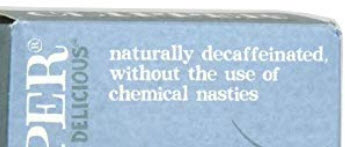


Nice blog. Good impartial advice and easy to read. Thanks for the link too. Personally I now stick to Rooibos tea or otherwise known as Red Bush. this is a completely different plant not related to the Camelia plants that most teas come from. It is natural free of caffeine which is unusual for a plant but it means it needs no processing at all to remove caffeine so the taste is preserved to the fullest. Some people find it an acquired taste but I now prefer it to normal tea and indeed the smell of normal non-decaf tea I find quite repulsive.
Thanks for your kind comment Sally. I enjoy Rooibos tea too, as an alternative – much to the annoyance of some of my colleagues when they smell it – LOL! As you say, it’s completely natural, caffeine free, and it’s alkaline rather than acidic. A great choice! That reminds me… it must be brew time!
David, I really like your new layout. Well done, it is nice to read and simpleto navigate around.
Thanks George. It’s done on the Genesis framework.
Good write up, is interesting how some so called healthier products are processed using chemicals. I have tried Roobios (which I do like), as I’m also trying to avoid caffeine later in the day. I am currently trying Twinings Tumeric with orange & star anise, tastes great, wonder how it’s processed…..?
Thanks Barry.
Yes, it’s always good to know these things. The use of chemicals certainly surprised me – hence the research, and then the article.
What I tend to do nowadays is put lots of loose-leaf green tea into a floating tea infuser, let it brew for only a short time, then re-use it throughout the day. That way, my theory is that the caffeine eventually reduces to negligible amounts by what’s effectively the water-method of decaffeination.
Dear David!
Do you know if the CO2 process used in the IMPERIAL Organic GREEN TEA, is safe?
Thank you for responding
Thanks for your question, Lumina. I’m not familiar with the Imperial Organic Decaffeinated Green Tea brand. But it does say on their website that it’s “decaffeinated by a natural CO2 process”.
I drank black caffeinated tea most of my life – then about 8 years ago it started making me feel sick, mostly shaky and pressure in my head. I have been drinking only 1 cup of Tetley decaf a day and it still makes me feel the same – I find I can only drink maybe 1 to 3 per week to avoid the nasty feeling. Could it be how they process it that is causing my issue? The use the ethyl acetate process.